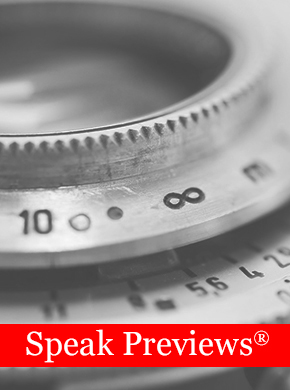In the last few years, "PowerPoint" has become almost synonymous with "presentation." The program and its elaborate capabilities have become ubiquitous. Creating a truly effective presentation, however, requires that you complete several initial steps before you start worrying about a slide deck. Draft your presentation first: define your purpose, analyze your audience, determine messages, support, and organization. Then, include visuals as part of your revision process.
Sometimes, though, slides may not be the best choice. A different kind of visual might better enhance your message—an artifact, a video, or a demonstration, perhaps.
When your speaking situation does demand a slide deck, design slides that support and reinforce your main messages. As you revise and perfect your presentation, note which ideas or points would gain clarity or strength through a well-designed slide. Determine the purpose of each and jot down a description of what it should communicate.
Choose a visual based upon that purpose. A picture might help listeners understand a complex idea. A timeline might help them grasp a series of events. A diagram might help them relate one idea to others. A chart might demonstrate priorities.
You don't want to suffocate listeners with an avalanche of slides, however. You need to keep their attention, and the constant flicker of a slideshow will divert it. Projecting too many slides has a dizzying effect: eyes dart from speaker to screen to speaker at an alarming speed. Listeners lose focus; they lose track of your message.
Your audience needs time to comprehend information and to put it into the context of their own understanding. Providing no more than one slide for every two minutes of your presentation will give them that time and give you their attention.
The design of each slide should be simple. Elaborate effects overshadow messages, so skip the flying bullets and glowing boxes. Keep the template consistent. A solid background is more appealing and less distracting than one with patterns or gradations; white or gold text against a dark blue background offers the best contrast and readability.
Readability is paramount. A bolded sans serif font such as Arial, Calabri, or Candara can be seen clearly. Using 36-48 point type for headlines or titles and 28-36 for text will ensure that your audience can see the slide.
AIM FOR AT-A-GLANCE COMPREHENSION
The arrangement of text will also affect readability and understanding. Consider using a headline/evidence format—making an assertion is more powerful than announcing a topic. At the top of the slide, insert a headline or assertion of no more than two lines and then use the middle portion to provide a supporting visual.
In all formats keep text to a minimum - no more than six lines, no more than six words per line, no more than four bulleted items. Provide key words, not paragraphs, and use blank space generously.
As you draft your slides, test them. Project them on a screen and walk to the back of a room comparable to the one in which you will be presenting. Are the slides readable? Understandable? Are they meeting your purpose?
Revise them until you have a version that clearly reinforces messages.
Any visual is an aid, a way of supporting and emphasizing your message. Use visuals to supplement your presentation, not to supplant it.



